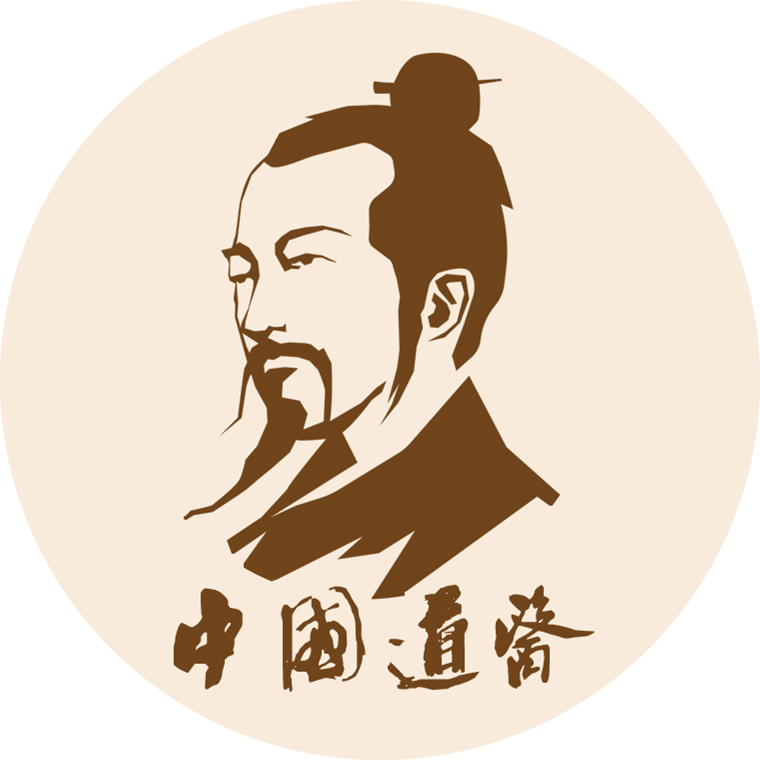
1. Alias
Shu Di (熟地).
2. Plant Morphology
A perennial herb, 10-70 cm tall. The entire plant is covered with grayish-white long soft hairs and glandular hairs. The roots are thick, fleshy, tuberous, cylindrical, or spindle-shaped. The stem is erect, single or branched at the base. The basal leaves are clustered, with ovate-lanceolate leaf blades, blunt tips, gradually narrowing at the base, extending into long petioles, with a wrinkled leaf surface and irregular serrated edges; the stem leaves are smaller. The flower stalk is erect, hairy, and has a racemose inflorescence at the upper part of the stem; the bracts are leaf-like, either well-developed or degenerated; the calyx is bell-shaped, with 5 lobes at the tip, triangular lobes covered with long soft hairs and white long hairs, with 10 veins; the corolla is wide tubular, slightly curved, dark purple outside, mixed with yellow inside, with distinct purple stripes, 5 shallow lobes at the tip, slightly bilabiate; there are 4 stamens, two of which are strong, with the anthers forked at the base; the ovary is superior, oval, 2-celled, becoming 1-celled after flowering, with 1 style and a swollen stigma. The capsule is oval or long oval, with a pointed tip, covered by the persistent calyx. The seeds are numerous. The flowering period is from April to May, and the fruiting period is from May to June.
3. Distribution
Produced in most parts of the country, with high yield and quality in Wenxian, Boai, and Mengxian in Henan Province.
4. Harvesting and Processing
(1) For raw Rehmannia, use the wine-steaming method until the wine is fully absorbed, then take it out, dry until the outer skin’s mucus is slightly dry, cut into thick slices or blocks, and dry to obtain. For every 100 kg of raw Rehmannia, use 20-30 kg of yellow wine. (Wine-steaming method: Take the raw material according to the processing regulations, add wine, place in a suitable container, seal, and heat with water or steam until fully cooked, or until the wine is completely absorbed, cool, take out, dry to 60% dry, slice, and dry. Generally, for every 100 kg of raw material, use 20-30 kg of wine.)
(2) For raw Rehmannia, use the steaming method until it becomes black and shiny, take it out, dry until about 80% dry, cut into thick slices or blocks, and dry to obtain. (Steaming method: Take the raw material, sort by size, according to the processing regulations, mix with water or liquid auxiliary materials until fully moistened, place in a suitable steaming container, heat with steam to the specified degree, take out, cool slightly, mix back with the steaming liquid, dry to 60% dry, slice or segment, and dry.)
5. Medicinal Properties
This product appears as irregular blocks or fragments, varying in size and thickness. The surface is black with a glossy appearance and has high viscosity. The texture is soft yet resilient, not easily broken, with a black and glossy cross-section. The aroma is faint, and the taste is sweet.
6. Nature and Taste
It is slightly warm in nature and sweet in taste. It enters the Liver (肝) and Kidney (肾) meridians.
7. Effects and Functions
It nourishes blood and enriches yin, benefits essence and fills marrow. It is classified as a blood tonic under the category of tonifying herbs.
8. Clinical Applications
For internal use: the dosage is 10-30 grams, or it can be made into pills, powders, decoctions, or tinctures. It is used for blood deficiency, palpitations, irregular menstruation, excessive bleeding, Liver and Kidney yin deficiency, soreness of the lower back and knees, tidal fever, night sweats, seminal emission, internal heat and thirst, dizziness, tinnitus, and premature graying of hair.
9. Pharmacological Research
Comparative studies on the effects of Shu Di and Sheng Di (生地) on vascular thrombosis indicate that the coarse Shu Di produced in China can strongly inhibit hepatic hemorrhagic necrosis and simple necrosis. However, Shu Di has a weaker anticoagulant effect. The activation of the fibrinolytic system was explored using the fibrin plate method, revealing that Shu Di has an activating effect, while Sheng Di does not. Reports also suggest that both Shu Di and Sheng Di have hemostatic effects, and the hemostatic effect of Shu Di does not increase after carbonization. Analysis of the hemostatic effects of decoctions from Sheng Di, Shu Di, Sheng Di carbonized, and Shu Di carbonized showed no significant differences.
10. Chemical Composition
Water and alcohol extracts of various Shu Di are more abundant than Sheng Di and dried Rehmannia, but the differences in extracts from various processing methods are not significant. Unique cyclic ether terpenes and glycosides are found in dried Rehmannia, while they are almost absent in Shu Di. Shu Di contains 8.57% glucose, which is higher than the content in fresh Rehmannia (1.56%), indicating that some polysaccharides are converted into monosaccharides during processing. During the processing of dried Rehmannia and Shu Di, glycoside components also decompose to varying degrees, with monosaccharide glycosides decomposing the most, followed by disaccharide glycosides, while the trioside Rehmannioside D (地黄宁甙 D) is almost not decomposed. The differences between Shu Di and dried Rehmannia are not significant except for the decomposition of Catalpol in Shu Di.
11. Contraindications
Contraindicated in cases of spleen and stomach deficiency, qi stagnation with phlegm, abdominal fullness, and loose stools.
12. Compatible Formulas
① For treating impotence: 30 grams of Shu Di, 12 grams each of Shan Yao (山萸肉), Bai Zhu (白术), 3 grams each of Yuan Zhi (远志), Ba Jitian (巴戟天), Du Zhong (杜仲), 6 grams each of Rou Gui (肉桂) and Fu Shen (茯神), 9 grams each of Ren Shen (人参) (to be cooked separately), and Gou Qi Zi (枸杞), 15 grams each of She Chuang Zi (蛇床子) and Rou Cong Rong (肉苁蓉), 10 grams of Huang Qi (黄芪), and 20 grams each of Da Bao (胎盘) powder and Xian Ling Pi (仙灵脾) (to be swallowed). For chronic cases (impotence lasting over 3 years), add 1.5 grams of Lu Rong (鹿茸) powder (to be taken separately) or 10 grams of Lu Jiao Jiao (鹿角胶) (to be melted and taken), with a treatment course of 10 days. Rest for 1 week, then continue with a second course. [“Shanxi TCM” 1990; 6(3): 16]
② For treating elderly constipation: 30 grams each of Shu Di, Dang Gui (当归), Wei Ling Xian (威灵仙), Bai Zhu, and He Shou Wu (首乌), and 10 grams of Sheng Ma (升麻). Decoction for 1 dose per day. [“Inner Mongolia TCM” 1991; (3): 15]
③ For treating alopecia areata: 60 grams each of Shu Di and Tu Si Zi (菟丝子), 30 grams each of Dang Gui, Chuan Xiong (川芎), and Hang Shao (杭芍), and 24 grams each of Mu Guo (木瓜), Tian Ma (天麻), and Qiang Huo (羌活), ground into a fine powder, mixed with 586 grams of honey to form pills, taking 10 grams each time, twice daily. Additionally, use external wash medicine for treating alopecia areata, which has shown good efficacy. [“Journal of Traditional Chinese Medicine” 1963; (7): 14]






Daoist Medical Video Account
⊙ The content of this article is for clinical reference only; non-TCM professionals should not attempt to use herbs.
⊙ Some images and texts are sourced from the internet; please contact us for removal if there is any infringement.
⊙ For Daoist medical consultations, add WeChat ID: daoxuea
⊙ For submissions and collaborations: [email protected] (original submissions are welcome)
Selected Articles
❶ Free Connection: Mid-Autumn Festival with Moon Fragrance, seeking the familiar taste of Mid-Autumn in the name of fragrance! (Limited quantity, first come first served)
❷ Tonifying Kidney Qi and treating hiccups! Small black sesame has many uses; try these three methods for double the effect!
❸ Qimen Zhou Tian Gong: Gathering the essence of heaven and earth, greatly tonifying the original essence to achieve the unity of heaven and man!
❹ In autumn, moxibustion at this acupoint nourishes the lungs, regulates the heart, dispels cold and stasis, and alleviates various ailments!
❺ Liver Qi stagnation harms the body over time: soothe the liver and regulate qi; do you know how to use these two herbs?
❻ Daily learning of Chinese herbs: Fu Shen (茯神)!
❼ The yin and yang of heaven and earth have their numbers; the plum blossom divination knows good and bad!
❽ Regularly drinking this cup of tea allows the eyes to rest and the liver to sleep well! Simple to brew, and it can also replenish kidney qi!
❾ Daoist herbal adjustment methods can strengthen the weak and rejuvenate the elderly!

 Scan to Follow Daoist Medicine
Scan to Follow Daoist Medicine
Here, there are no chicken soup, folk prescriptions, rumors, or advertisements, only reliable Daoist health and wellness knowledge.


